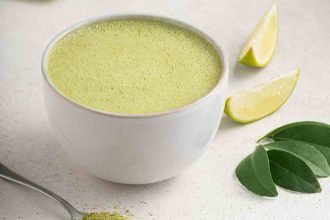Stress has become one of the defining experiences of modern life. From the moment the alarm rings in the morning to the late hours of scrolling through emails at night, the pace of daily routines leaves little space for true rest. Many people live in a cycle of constant deadlines, financial pressures, and personal responsibilities. The result is a weight that shows up in both body and mind. Doctors frequently warn that unmanaged stress can raise the risk of heart disease, weaken the immune system, and affect memory and concentration. Yet despite these warnings, the ability to reduce stress remains an underappreciated skill.
Learning to manage stress does not mean eliminating every challenge or frustration from life. That is impossible. What it means is developing ways to respond to tension in healthier and more sustainable ways. The techniques that follow are not about escaping reality but about building resilience. They are practices that help people pause, reset, and restore balance so they can handle the demands of life with greater clarity and strength.
The Power of Breathing
One of the most overlooked tools for calming the mind is something everyone does automatically: breathing. Shallow, rapid breaths are a natural reaction to stress, but they also reinforce feelings of anxiety. Slow, deep breathing has the opposite effect, sending a signal to the nervous system that it is safe to relax. Simply taking a few minutes to focus on inhaling through the nose, holding briefly, and then exhaling through the mouth can quiet racing thoughts. Some people practice structured techniques such as box breathing, where each breath cycle follows equal counts of inhaling, holding, exhaling, and holding again. Others find comfort in simply lying down and paying attention to the rise and fall of their chest. No matter the style, breathing practices are a portable form of relief that can be used anywhere from a crowded subway to a tense office meeting.
Mindfulness and Meditation
Mindfulness has become a familiar term in recent years, and for good reason. It is the practice of paying attention to the present moment without judgment. In a world filled with distractions and multitasking, mindfulness offers a way to step back and notice thoughts, feelings, and sensations as they are. Meditation is one of the most common methods of practicing mindfulness. Sitting quietly and focusing on the breath or on a repeated phrase allows the mind to settle. At first it can feel uncomfortable, because the habit of constant activity is hard to break. But with consistency, meditation becomes a mental reset button. Research shows that regular meditation can lower blood pressure, reduce anxiety, and even rewire parts of the brain associated with emotional regulation.
Movement as Medicine
Exercise is not only for physical health. It is one of the most effective stress management techniques available. When the body moves, it releases endorphins, chemicals that act as natural mood lifters. A brisk walk, a bike ride, or a dance session in the living room can create an immediate sense of relief. The key is not the intensity but the consistency. Even gentle practices like yoga and tai chi combine physical movement with controlled breathing and focused awareness, offering a triple benefit for stress reduction. Movement gives the mind a break from overthinking, anchors attention in the body, and provides a constructive outlet for tension.
The Role of Rest and Sleep
Chronic stress often goes hand in hand with poor sleep. Late nights spent worrying or working lead to exhaustion, which in turn makes stress feel even heavier. Creating a healthy sleep routine is essential. This means setting regular bedtimes, reducing screen time before sleep, and creating a restful environment with dim lighting and comfortable bedding. Short relaxation rituals like reading a book or listening to calming music signal the body that it is time to wind down. While it may feel tempting to sacrifice sleep for productivity, the truth is that adequate rest is the foundation for handling challenges with resilience.
The Healing Power of Connection
Humans are social beings, and relationships play a powerful role in managing stress. Sharing worries with a trusted friend or family member provides emotional release and perspective. Simply being heard can lessen the weight of anxiety. On a biological level, positive social interaction stimulates the release of oxytocin, a hormone that counteracts the stress response. Whether through casual conversations, community groups, or deeper bonds of friendship and love, connection is a reminder that no one has to carry their burdens alone.
Nature as a Reset
Modern life often disconnects people from the natural world. Yet spending time outdoors is one of the simplest ways to reduce stress. Studies have shown that even short periods in green spaces can lower cortisol levels, the hormone associated with stress. The rhythm of waves at the beach, the rustle of leaves in a park, or the silence of a forest provides a sensory reset. Nature slows down the pace of thought and offers perspective beyond the daily grind. Making time for outdoor walks, gardening, or even keeping plants indoors can create moments of calm that accumulate over time.
Nutrition and Stress
What people eat influences how they handle stress. Diets high in caffeine, sugar, and processed foods can create spikes and crashes in energy that worsen irritability and anxiety. On the other hand, balanced meals with whole grains, lean proteins, fruits, and vegetables support stable energy levels and mood. Hydration is equally important, as even mild dehydration can increase feelings of tension. While food is not a magic cure, mindful nutrition provides the body with the tools it needs to withstand stress more effectively.
Shaping the Mindset
Perhaps the most subtle but powerful technique for reducing stress is changing perspective. Stress often grows out of how people interpret situations. Learning to recognize negative thought patterns and reframe them can transform experiences. Instead of viewing challenges as threats, they can be seen as opportunities to learn or adapt. This does not mean ignoring problems but approaching them with curiosity and resilience rather than panic. Practices such as journaling can help identify patterns, while affirmations or therapy can support the cultivation of healthier mental habits.
Small Steps, Lasting Impact
The beauty of stress reduction techniques is that they do not require dramatic lifestyle overhauls. A few minutes of breathing, a daily walk, a conversation with a friend, or a mindful meal can all make measurable differences. These practices work best when woven into daily routines rather than treated as occasional remedies. Over time, they create resilience, allowing people not only to survive challenges but to thrive in spite of them.
Final Thoughts
Stress is not an enemy to be eliminated but a signal to be understood. It reminds the body and mind to slow down, to pay attention, and to care for themselves. By practicing techniques that nurture calm, balance, and resilience, anyone can transform the way they experience stress. The world may continue to be fast and demanding, but within it lies the possibility of finding stillness. Learning to reduce stress is not about perfection but about progress. Each small act of self-care builds strength for the next challenge, creating a life that feels calmer, healthier, and more empowered.
Featured Image Source: Zdeněk Macháček / Unsplash









